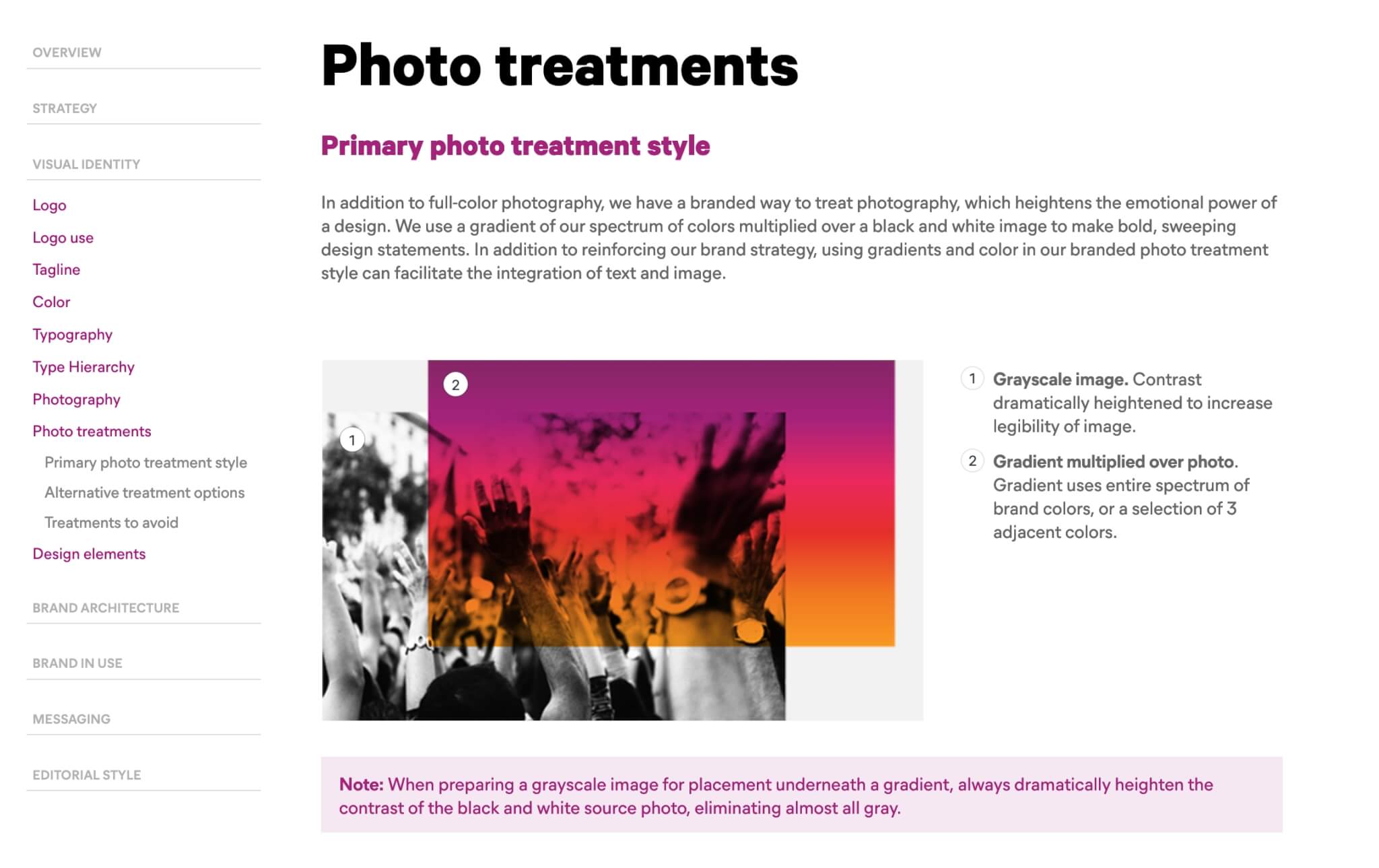Three ways to start democratizing your brand
At Big Duck, we’re constantly looking for new and deeper ways to co-create, share, and integrate brands into every organization’s culture—a practice called “brand democracy”. This idea was articulated in the book, The Brand IDEA: Managing Nonprofit Brands with Integrity, Democracy, and Affinity by Nathalie Laidler-Kylander and Julia Shepard Stenzel, where they define brand democracy as “the extent to which an organization engages its board, staff, members, participants, volunteers, supporters, and other stakeholders in both defining and communicating the brand identity.”
We believe that a brand is more than just a shiny logo or catchy slogan. A brand is your organization’s voice. It’s what your audiences hear, see, think, and feel— and the impression that is formed as a result of their experiences with you. To truly develop a brand that takes hold internally, so you can build relationships and spark change externally, here are three ways to start democratizing—and increasing the power—of your brand.
- Involve your staff, board, and community in the brand development process.
Strong brands resonate with their audiences—and the best way to make sure that happens is to build your brand in partnership. Don’t silo decision-making. Meaningfully engage folks, and incorporate their perspectives as you shape the brand. At pivotal moments in the process, invite feedback. These moments could look like sharing input on what a new tagline should be, or voting on logo or color options. Use tools like online forms or webinars to get feedback, or just ask folks to email you with their thoughts.
If you already have your brand established, there are still ways to engage folks. It’s always a healthy practice to continuously get feedback on what’s working (and what’s not) with what’s already in place. Think through what parts of your brand might benefit from a fresh review—perhaps some high-level messaging, or your email template—and solicit feedback.
If changes to your brand are made inclusively, staff, board, and your community of participants, volunteers, donors, and other audiences may feel a more authentic sense of belonging and affiliation with you.
- Make your brand guide more accessible on an online, digital platform.
A dynamic brand management hub—instead of a static PDF.pdf—is a remarkable tool for collaboration. Digitizing the brand democratizes the brand, making it easier to reach and use, be it for downloading templates to help organize a protest, creating brand cohesion with an office on the other side of the globe, or equipping and training staff and volunteers.
Shriver Center on Poverty Law, for example, has a brand collaboration space that aligns its various staff and lawyers across the country. Family Connections builds cohesion internally throughout their programs spread across many schools and locations throughout Northern New Jersey. And Community Change, an organization building the power of low-income people, especially people of color, to fight for a society where everyone can thrive, includes step-by-step instructions on creating materials in their brand.

Democratized access to brands is happening more and more, well beyond Big Duck’s client roster. In the last presidential election, Pete Buttigieg established a brand with democracy at the core. He created a toolkit for his supporters to dig into and “own,” to truly feel a part of #teampete. 350.org is an example of an organization that’s fashioned its brand into a public portal of resources, supplying their toolkit for climate change activists to use freely in their movement efforts. And increasingly, fundraising and outreach campaigns provide a toolkit for folks to be ambassadors with graphics and messages to share on social media, like RAICES Texas has done here to free and reunite migrant families.
Brand portals can be hosted on your website or take the shape of third-party tools like Frontify, a free digital brand management platform, and Canva, a free-for-nonprofits tool to make branded art. Requiring professional designers and specialized tools to maintain the brand are barriers. Having the brand assets housed in a centralized, cloud-based location also allows more folks to manage regular updates, which keeps the brand dynamic. For example, if one word changes in your vision statement, or if your organization creates Zoom backgrounds after a COVID-inspired pivot to virtual programming–it should be easy to incorporate those healthy adaptations into your brand guide in real-time.
- Incorporate the brand more deeply into your organizational culture.
For staff, board, and volunteers to feel confident as your brand ambassadors, your brand must be a deep part of your culture.
One important part of this is education. Hold trainings with your staff, board, and anyone else who communicates regularly on your behalf to give them the tools they need to tell your story consistently. Not everyone will need to be trained on every aspect of the brand, so think through what your goals are, and what aspects of your identity—positioning, personality, vision, mission, values, high-level visuals, ethical storytelling, messaging, and more—will be most useful for whatever group you’re training. Make sure to include the “why” as well as the “what”—why the brand matters, and their role in shaping the experience of the brand. Make the training as engaging as you can, so folks deeply absorb important elements. Providing exercises and hosting conversations about how to adapt the messaging for different communities are helpful. Record the trainings and keep them on your digital brand portal, so you can bring new staff, board, or volunteers up to speed. Some nonprofits even include brand training as part of their onboarding process.
Another essential element of incorporating your brand into your culture is to harness the role of internal communications and make it a living part of everyone’s work. Encourage folks to incorporate your brand strategy (positioning and personality), goals, audiences, and more into conversations and meetings (e.g., “this tweet highlights our fearless personality trait”). The brand will feel alive and relevant if your team also makes a continuous practice of reporting back transparently on the impact of your brand and communications. When you run campaigns, host events, or experience other major communications moments, share their reach and impact. Invite all staff, volunteers, and board to share communication or brand wins as well.
Intentionally democratizing your brand identity shares some concepts with keeping your brand alive and active, or “sticky”. Both concepts mandate moving away from the idea of gatekeeping, with a single person or department functioning as a “brand champion”, while ensuring that a brand retains consistency so that audiences recognize and forge strong connections with your brand expression.
It’s simply not true that a brand must be tightly regulated and managed to be effective. The strongest brands today are the ones where staff and supporters feel inspired to communicate, all equipped to speak in an organization’s powerful brand voice.





